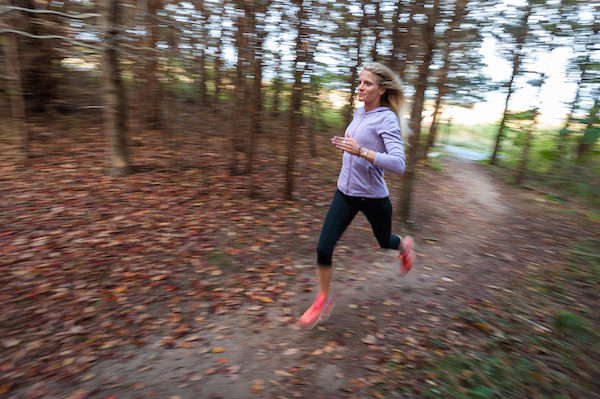How can I prevent another ankle sprain?
Dr. David Lisle
The leaves are dropping and the nights are getting cooler. For many of us, this means taking that mountain hike or going for a trail run. For whatever reason, this time of year often has us treading on uneven ground, which, unfortunately, can lead to ankle injuries.
The most common injury is an inversion ankle sprain. This occurs when the ankle rolls and the ligaments on the outside (lateral part) of the ankle are stretched. Typically, this injury leads to sprains of two important ligaments that under most circumstances will heal on their own. However, often folks who sprain their ankles don’t seek adequate care—which leads to repeated sprains.
The two small strap muscles on the outside of the lower leg (the peroneus longus and brevis) form a protective muscle group that prevents strains. When an ankle begins to invert or roll, these muscles fire to prevent inversion. After an ankle sprain, these muscles need to be retrained to do their jobs. Also, when ankle ligaments are stretched, the feedback mechanism that tells our brains we are in danger of a sprain gets short-circuited. We no longer get that warning signal that the ankle is about to roll and we can have repeat sprains.
What should we do to prevent and treat ankle sprains? One University of Wisconsin study looked at 1460 high school basketball players and found that players who used lace-up ankle braces had significantly fewer initial sprains or repeat injuries compared with those how didn’t. This finding has been supported by other studies and is a why reason braces are often recommended after an initial sprain.
If a sprain is severe, you may spend a short time on crutches. But the number one treatment for ankle sprains begins with something called protected weight bearing. Protected weight bearing means using a walking boot, a stirrup splint or a lace-up brace to help protect the ankle during the first phase of healing. Of course, RICE (rest, ice, compression and elevation) is critical during this initial healing phase. The level of protection for the ankle (walking boot, stirrup or lace-up brace) all depends on how severe the sprain is.
Sprains are graded into three levels. A Grade 1 sprain is a very small tweak or minimal stretch to the ligaments. Typically, these are minimally painful and heal very fast. A person with a Grade 1 sprain may be able to use a lace-up brace right away. Grade 2 sprains are the most common and involve more stretching of the ligaments with swelling, bruising and difficulty bearing weight. These often will need either a walking boot for a week or two or an ankle stirrup depending on how painful it is to put weight on your foot. Grade 3 sprains are complete tears of the ligament. These usually do not need surgery, but will likely need some period of time in a walking boot with a slow transition to a stirrup.
During the recovery phase, some form of physical therapy is usually recommended. This is extremely helpful to help return mobility, to reduce swelling and pain and to strengthen the ankle joint. The more advanced management of ankle sprains starts about two to three weeks after the injury and involves improving balance and proprioception. Proprioception is how our brains sense the position of a joint without actually looking directly at it. Ankle sprains often hinder our proprioception and physical therapy can help retrain this protective mechanism.
Typically sprains can take three to six weeks to heal. High ankle sprains, which are different than inversion injuries, typically represent a more severe injury and can take three months or more to recover.
Perhaps the best prevention is to strengthen your ankles ahead of time. Try standing on one leg, or jumping rope. And when you do go for a hike, wear good shoes and watch your footing!
Dr. David Lisle is a sports medicine physician in Burlington, Vermont. He holds dual appointments as assistant professor in the Department of Orthopaedics and the Department of Family Medicine at the University of Vermont College of Medicine. He is the director for the sports medicine curriculum in the University of Vermont Family Medicine residency program. Dr. Lisle serves as the team physician for St. Michael’s College, the Vermont Lake Monsters Single A baseball affiliate and several Burlington-area high schools. He is also an assistant team physician for University of Vermont athletics. He graduated from the University of Connecticut Sports Medicine fellowship in 2006.

